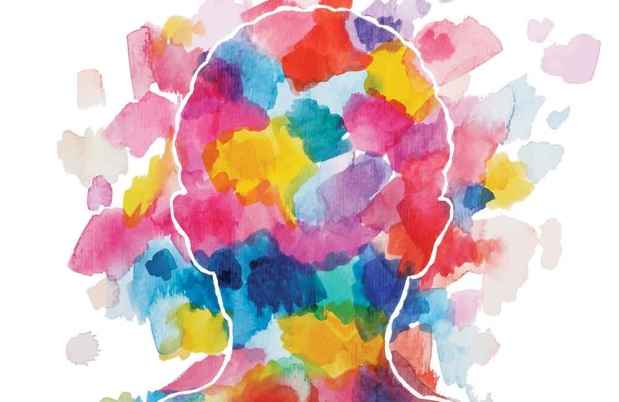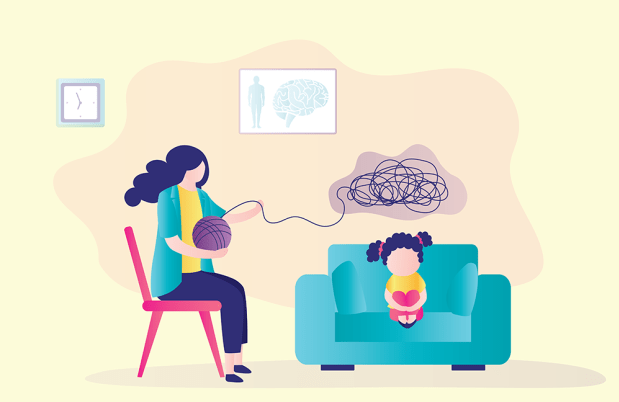Everything You Need To Know About OCD
If you think that obsessive compulsive disorder only involves excessive handwashing, think again
August 27, 2023
We all experience anxiety, a feeling of dread that happens to be your body’s natural response to stress. It may be brought on by a variety of circumstances, including making an important decision, an upcoming test, or meeting someone new.
If someone is living with an anxiety disorder like OCD, these feelings don’t go away and often develop into symptoms that, if untreated, can interfere with relationships, job performance, schoolwork, and even basic functioning.
Thankfully an OCD diagnosis doesn’t have to limit someone’s potential. Many people successfully manage their OCD and live normal, successful lives.
If you or a loved one has been diagnosed with OCD, there is hope.
Keep Reading To Learn
- The truth about OCD
- How to recognize symptoms of OCD in yourself and others
- How to successfully manage and treat OCD
What Exactly Is OCD?
Obsessive compulsive disorder (OCD) is a disorder that involves unwanted intrusive thoughts followed by feelings of anxiety, uncertainty, and even occasional panic. The condition causes the person to get stuck in a cycle of obsessions and compulsions that impact the way they think and behave.
OCD is more than just an occasional obsessive thought or behavior. People with OCD usually struggle with obsessions, compulsions, or both daily. If unaddressed, these issues can affect many aspects of someone’s personal and professional life.
Confronting Her Fears
Robin was one of the first patients at McLean’s OCD Institute. Learn more about her inspiring story of hope and healing.

Understanding the Obsessions of OCD
Obsessions are repetitive, intrusive, and unwanted thoughts that are difficult to control. These thoughts trigger distress, cause anxiety, and are usually focused on one or more specific themes.
For example, someone with OCD may have intrusive thoughts about germs and infections that cause them to worry about catching an illness.
These thoughts and compulsions are disruptive and disturbing. Even if the person with OCD realizes that the thought doesn’t make any sense, it still produces fear, doubt, and other negative feelings.
Obsessions are time-consuming and make it difficult for the individual to complete important daily activities.
There are many examples of obsessions that may affect people with OCD.
Contamination
Someone may fear coming into contact with bodily fluids, such as urine or feces; germs or diseases, such as HIV; or environmental contaminants, such as asbestos, radiation, or household chemicals.
Losing Control
Other individuals may have a fear of impulsively harming themselves or someone else, saying obscene words or insulting someone, or stealing things.
Harm
Causing harm to yourself or others can include a fear of being responsible for something terrible happening, such as a fire, or of harming others because of not being careful enough, such as causing someone to trip by leaving an object on the ground.
Obsessions Related to Perfectionism
Perfectionism tendencies can include focusing on making things exact or even at all times, the need to remember or know certain things, and the fear of losing things. These tendencies typically stem from attempts to reduce anxiety or distress associated with uncertainty or a specific feared outcome—not because they want everything to be perfect.
Unwanted Sexual Thoughts
Some people experience intrusive sexual thoughts or images, impulses focused on others, obsessive thoughts about sexual orientation, unnatural sexual obsessions focused on incest or children, or obsessions focused on aggressive sexual behavior, such as rape.
Religious Obsessions
These obsessions often center around the fear of offending God, blasphemy, or obsessing over morality. This sub-type can focus on one’s faith or moral compass.
Other Obsessions
Additional obsessions include concerns with getting a physical illness or disease, such as cancer or Alzheimer’s disease; superstitious ideas about lucky numbers, unlucky numbers, certain colors, and more.
Listen Now!
Dr. Nathaniel Van Kirk, a psychologist at McLean and a participant in our Deconstructing Stigma public awareness campaign, talks about what it’s like to live with OCD
Understanding the Compulsions of OCD
Compulsions are repetitive thoughts or behaviors the individual engages in to neutralize the obsession and distress caused by it. Compulsions are typically rigid and designed to neutralize distress or prevent a feared outcome.
These behaviors may be odd or unnecessary to an outsider, but they provide temporary relief from distress for the individual who performs them.
For example, in the case of someone who has intrusive thoughts about germs, compulsions may include frequent handwashing.
These compulsions may cause an individual to fixate on certain details while inadvertently neglecting others.
Using hygiene guidance during the COVID-19 pandemic as an example, McLean’s Nathaniel Van Kirk, PhD, explains that someone living with OCD may focus solely on one aspect of CDC guidelines and ignore the rest.
“Extreme anxiety can cause tunnel vision where someone may not be following the recommendations the way they should be because they’re so hyper-focused on a specific piece of it that they forget about the other aspects of the guidance,” he says.
“It’s an example of how rituals develop. It’s an attempt to get rid of uncertainty and the anxiety that goes with it.”
Despite knowing that engaging in a compulsion only provides temporary relief from the stress brought on by the obsession, people with OCD still use them to cope. Similar to obsessions, compulsions take up a lot of time and interfere with daily activities.
There are many examples of compulsive behaviors.
Checking
These actions can include repeatedly making sure you didn’t harm yourself or someone else, checking for mistakes, checking locks or appliances, or checking specific parts of the body for signs of illness.
Repeating
Someone may rewrite things or repeat certain activities, such as going in and out of a door a specific number of times or performing repetitive body movements.
Washing and Cleaning
These behaviors might consist of using extreme measures to prevent contact with contaminants, cleaning objects in the home excessively, having specific and/or extreme handwashing routines, or performing excessive grooming, such as toothbrushing or bathing.
Mental Compulsions
Mental rituals can include mentally reviewing past events, reviewing procedures or events repeatedly in an effort to have certainty that something didn’t happen, prayer rituals, undoing or canceling rituals—such as replacing bad words with good ones, and thinking a neutralizing image or repeating tasks a specific number of times until it “feels right.”
Other Compulsions
People with OCD may experience other compulsions, such as avoiding things that trigger obsessions, rearranging things or putting things in order repeatedly, or telling, asking, or confessing to others to get reassurance.
OCD can be devastating for a child or teen, but there’s hope for those who receive proper psychiatric care. Learn more about how OCD affects young people.
What Is OCD?
Our friends at ADAA help us understand OCD and how to know when to seek help
How Do I Know if It’s OCD or Not?
Many people will experience obsessive thoughts or compulsive behaviors at some point during their lives. To qualify for an OCD diagnosis, these obsessions and compulsions must be frequent and severe enough to disrupt the person’s life. While some symptoms may be more commonly discussed, like handwashing, it’s important to remember that OCD can take many shapes and forms. Each person’s OCD is as unique as they are.
Not every person who experiences an obsession or compulsion has OCD. In general, people with OCD:
- Spend at least one hour every day dealing with obsessions or compulsions
- Experience disruptions to daily life and/or relationships because of obsessions and compulsions
- Cannot control their thoughts or behaviors, even when they impact daily life in a negative way
- Experience relief from anxiety when performing a compulsion but don’t get any pleasure out of the activity
Symptoms of OCD may not remain the same all the time. For some people, they may fluctuate depending on stress levels or other factors. Other people may get better or worse as they age.
Some people with OCD use alcohol or other drugs to self-medicate and reduce their symptoms.
Not all repetitive behaviors are compulsions. To determine whether a behavior is truly compulsive, think about the purpose and the context.
For example, brushing your teeth and washing your face (in a non-ritualized, time-consuming manner) before bed are both rituals, but they are not compulsions if they are not done in a ritualistic form and in an effort to alleviate distress/an unwanted intrusive thought. Similarly, spending eight hours every day organizing books is not a compulsion if you work in a library.
To qualify as a compulsion, a behavior must be driven by the individual’s desire to escape feelings of fear or anxiety. In most cases, the individual would rather not do these things but feels they have no choice.
Most adults who have OCD will recognize that their thoughts or behaviors are abnormal. However, children and even some adults may not be aware of the problem. In this case, friends or family members may have to intervene so the person can seek help.
Sean’s Story
As a participant in McLean’s Deconstructing Stigma campaign, Sean tells his story of his struggles with OCD and how getting the help he needed changed his life.

Is It Fear, Uncertainty, or Panic? In Other Words, Anxiety Can Be Complex
Fear and anxiety are similar emotions, but they are not exactly the same. While fear focuses on something happening right now, anxiety focuses on something that may happen in the future.
According to the DSM-5 (the standard for psychiatric diagnosis), “Fear is the emotional response to real or perceived imminent threat, whereas anxiety is anticipation of future threat.”
You can also use the term anxiety to describe a chronic feeling of worry that doesn’t focus on any specific threat or problem. For example, you may have a short-term feeling of fear if you see a snake. At the same time, you may wake up in the middle of the night with anxiety so severe that you can’t go back to sleep, even if no clear cause or threat is facing you at the time.
Uncertainty plays an important role in anxiety disorders, especially OCD. Uncertainty is the feeling of not knowing what will happen or what the outcome of a situation will be. OCD centers around the desire to be certain.
This feeling can be very uncomfortable for people who are prone to anxiety. Doubt and uncertainty are at the center of OCD. People who have OCD struggle to tolerate any level of uncertainty and will go to great lengths to avoid it and regain a sense of control.
Panic is a different emotional state most commonly associated with panic disorder. Panic is best described as an uncontrollable feeling of anxiety or terror, often leading to abnormal behavior. In many cases, feelings of panic are accompanied by physical symptoms, such as sweating or a racing heartbeat.
How Is OCD Treated?
Like each person with OCD, every case is unique and has specific needs.
To determine if you have OCD, a mental health professional will consider several factors. First, your clinician will ask if you are experiencing any of the common obsessions and compulsions associated with OCD. The clinician will also want to know if your obsessions or compulsions are negatively affecting the way you function day-to-day.
Other factors your clinician will consider include other psychiatric conditions you might have, your family history, and any environmental, social, or physical problems you might be having that could contribute to your anxiety.
Working with an OCD specialist or someone well versed in the signs and symptoms of OCD is critical in order to obtain a proper diagnosis. After receiving a diagnosis of OCD, it is critical that you have a care team that can help craft the proper treatment plan that works for you and your OCD, whether through talk/behavioral therapy, medication, or a combination of treatments.
Behavioral Therapy
Behavioral therapy involves a one-on-one relationship between a patient and a therapist. The most effective approach used to treat anxiety disorders and OCD is cognitive behavior therapy, or CBT.
The goal of CBT is to help the patient learn to think and behave differently when they experience fear or anxiety. CBT may also teach social skills. A clinician may recommend a specific type of CBT, depending on diagnosis.
Exposure and Response Prevention
Many patients benefit from a specific type of CBT known as exposure and response prevention therapy, or ERP. This is often referred to as the gold-standard behavioral therapy approach for OCD.
This treatment, which is well supported by research, involves exposing the patient to triggers that cause their anxiety and teaching them to no longer respond to the exposure with rituals or compulsions. A specific treatment plan is created for each individual. ERP should be used with an OCD specialist.
Acceptance and Commitment Therapy
ACT helps people to better tolerate and accept the discomfort of their obsessions. This is a very helpful alternative for those who are hesitant to try ERP. Depending on the patient, this may also be a helpful therapy to use alongside ERP.
Medication
Several different medications can be used to help relieve the symptoms of OCD. Medication is typically prescribed by a physician or psychiatrist. Examples of medications that may be used to treat OCD include beta-blockers, antidepressants, and anti-anxiety medications.
Support Groups
Many people who have OCD or other anxiety disorders find that joining a support group or self-help group can be helpful. These groups may meet in person or online. The goal of support groups is to connect patients with others who have the same disorder so they can provide mutual support and help one another cope.
Stress Management
Research shows that self-care and relaxation techniques may help people with anxiety disorders like OCD to experience fewer symptoms.
Examples of stress management techniques include regular exercise, yoga, meditation, and deep breathing. Getting plenty of sleep, focusing on nutrition, and limiting consumption of alcohol and caffeine are also recommended.

Howie speaks openly about living with OCD and is an example to us all that with treatment, OCD can be managed, and you can have a happy and productive life
OCD Is Treatable—Don’t Lose Hope!
Despite widespread belief, OCD and anxiety disorders are much more common than you may think.
If you feel that you may have OCD or know someone who does, or if you feel that your OCD is out of your control, consider seeking help from a mental health professional.
A diagnosis of OCD can be scary at first, but it can be managed. Many people, including Howie Mandel, live productive and successful lives with a diagnosis of OCD.
Many effective treatments work for the management of OCD. While there is no one-size-fits-all treatment plan for people living with OCD, there are many options that can help you and your care team create an individualized plan to help you live a happy, successful life without the interference of your symptoms.
While OCD is a chronic illness, it is controllable and is nothing to be ashamed—or afraid—of. Reach out to your primary care physician or a local mental health facility like McLean to find the care you need. The sooner you seek care, the sooner you can start to feel the weight of your symptoms lighten.
OCD Causes and Risk Factors
Research suggests that differences in the brain and genetics may play a role in OCD. While the exact cause of OCD is still unknown, researchers have identified several possible risk factors that could contribute to a higher likelihood of diagnosis.
Differences in Brain Structure and Chemistry
According to studies, OCD involves communication problems between the front part of the brain and deeper structures of the brain. These brain structures use a chemical messenger called serotonin. Differences in serotonin levels may contribute to OCD. In some people, the brain circuits involved in OCD become more normal either through medication that affects serotonin levels or cognitive behavior therapy (CBT).
Genetics
OCD tends to run in families, so certain genes may make someone more likely to develop this disorder.
Trauma
Certain physical or emotional traumas may trigger the beginning of OCD.
Some studies indicate that an illness or even ordinary life stresses may provoke the activity of genes associated with the symptoms of OCD. While unwanted and intrusive thoughts often occur with trauma and post-traumatic stress disorder (PTSD) and can look similar to OCD, trauma focuses on intrusive thoughts based on the past traumatic event, and OCD typically focuses on future uncertainties and attempts to lessen them.
OCD Rarely Acts Alone
Many people with OCD also have another mental health condition. Some of the disorders that often develop along with OCD include:
- Panic disorder
- Social anxiety disorder
- Generalized anxiety disorder
- Phobias
- Mood disorders, such as depression
- Obsessive compulsive personality disorder
- Tic disorders, which may cause vocal or motor tics; vocal tics, which include grunting sounds, sniffing, and clearing the throat; motor tics, which are repetitive movements of specific parts of the body, such as the eyes, shoulder, head, or face
- Body dysmorphic disorder
- Trichotillomania, or pulling out hair from scalp, brows, or other body parts
- Excoriation disorder, or skin picking disorder, which involves repeated picking at one’s skin
McLean Is Here to Help
If you or a loved one is struggling with OCD, McLean offers world-class treatment at the intersection of innovation and compassion.
Statistics About OCD and Anxiety Disorders
It is estimated that as many as 19.1% of adults in the United States have experienced symptoms of an anxiety disorder in the past year, while up to 31.1% of adults in the U.S. will experience these symptoms at some point in their lives. Women are more likely to have anxiety disorders than men.
Although women have a higher risk of developing an anxiety disorder overall, OCD occurs at roughly the same rate in both men and women. The rate of OCD in people of different races, backgrounds, and ethnicities is roughly the same as well.
This disorder can begin at any age. However, the first appearance of symptoms most often occurs between 8-12 years old or in late adolescence/early adulthood.
Estimates indicate that 1-2% of adults in the U.S. struggle with OCD. This translates to between two and three million people. Among kids and teens, OCD affects approximately one in 200 people. Around 500,000 kids and teenagers in the U.S. are currently struggling with OCD.
The World Health Organization names OCD as one of the top 20 causes of illness-based disability in the world among people between the ages of 15 and 44.
Co-occurring disorders with OCD are not rare. Among those diagnosed with OCD:
- 76% have a lifetime history of another anxiety disorder, such as panic disorder, social anxiety disorder, generalized anxiety disorder, or a specific phobia
- 63% have a lifetime history of a mood disorder—the most common is major depressive disorder, with a 41% reported rate
- 23 to 32% have coexisting obsessive compulsive personality disorder
- Up to 29% of individuals with OCD seeking treatment have a lifetime history of a tic disorder
Want More Info?
Looking for even more information about OCD? You may find these resources helpful.
Interesting Articles and Videos and More
Learn more about obsessive compulsive disorder and what you can do if you or a loved one is displaying signs of OCD.
- What Is Sexual Orientation OCD?
- Do You Know the Difference Between Panic and Anxiety?
- Deconstructing Stigma – Sean’s Story
- The OCD Stories - podcast
- Video: Shining a Light on the Challenges of OCD
- OCD: Symptoms, Signs & Risk Factors
- Everything You Need To Know About Hoarding Disorder
- Everything You Need To Know About Stress
- McLean Hospital’s Innovative OCD Program: Two Decades of Progress
- Find all of McLean’s resources on OCD and child and teen mental health
Helpful Links
These organizations may also have useful information:
International OCD Foundation
The mission of the International OCD Foundation is to help people affected by obsessive compulsive disorder and related disorders live full and productive lives. The IOCDF aims to increase access to effective treatment through research and training, foster a hopeful and supportive community for those affected by OCD and the professionals who treat them, and fight the stigma surrounding mental health issues.
OCD Massachusetts
As a non-profit affiliate of the IOCDF, OCD Massachusetts aims to provide public and professional education about OCD to raise awareness and improve the quality of treatment provided in Massachusetts. They also work to improve access to resources for those with OCD and their families and advocate and lobby for the OCD community in Massachusetts.
Not Alone Notes
Not Alone Notes is a nonprofit organization that mails free, handwritten letters to people with OCD and related disorders. Their goal is to remind others they aren’t alone, encourage hope, and dispense resources.
Peace of Mind
Now part of the International OCD Foundation, provides educational resources and access to self-help tools, offers scholarship opportunities, supports professional training programs, and spreads awareness about OCD and related disorders.
Books About OCD
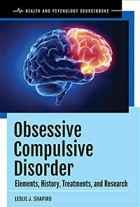
Obsessive Compulsive Disorder: Elements, History, Treatments, and Research
by Leslie J. Shapiro
(ABC-CLIO, 2020)
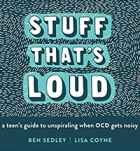
Stuff That’s Loud: A Teen’s Guide to Unspiraling When OCD Gets Noisy
by Ben Sedley and Lisa W. Coyne
(New Harbinger, 2020)
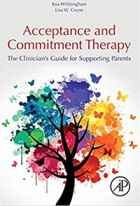
Acceptance and Commitment Therapy: The Clinician’s Guide for Supporting Parents
by Koa Whittingham and Lisa W. Coyne
(Elsevier, 2019)
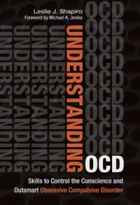
Understanding OCD: Skills to Control the Conscience and Outsmart Obsessive Compulsive Disorder
by Leslie J. Shapiro
(Praeger, 2015)


